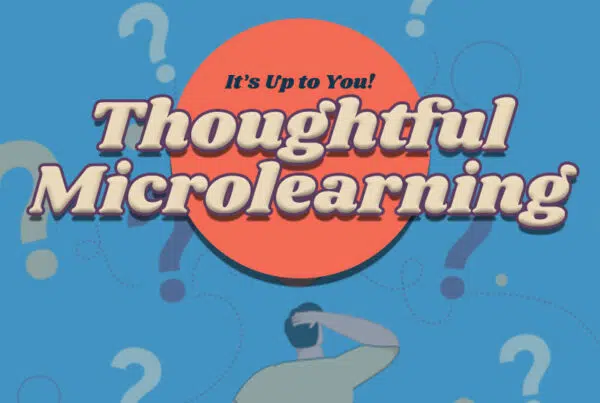Learning is a process, and not a passive endeavor. It’s not something that can be “topically applied” and expected to really sink in and stick with people. Suppose you were to walk into a lecture on a topic about which you know nothing. While you might pick up the odd tidbit of information, you may not remember it long, not having the contextual “scaffolding” in place to support it.
In fact, the more active the learning process, and the more engaged learners are, the more information will be absorbed and retained.
Why Active Learning Enhances Sales Training
The concept of active learning was developed into a concept called “action learning” by University of Cambridge physics professor Reginald Revans, and involves creating a questioning environment, and encouraging participants to work together to discover answers. The six components of action learning are:
- Identifying vexing problems, not easy ones
- Assembling a team where everyone has a stake in solving the problem
- Asking reflective, nonjudgmental questions
- Learning, which not only helps find answers, but aids team cohesion and unity
- Action, or trying things out in real time
- Coaching, to ensure nobody skips any important steps
Transfer of Knowledge Is a Process, Not an Event
Every training manager knows that transferring knowledge is not a one-time event. If it were, training would be far simpler! Knowledge transfer requires approaching information from multiple angles, ideally including many active learning angles. This is one reason gamification has become so popular recently. When learners can put new information and skills to use to advance in a relevant game scenario, they help knowledge transfer stick, and improve the neural pathways between new information and existing knowledge. Coaching is another important part of the process, because you can be taught something perfectly, but if you don’t use it, that knowledge doesn’t do you much good.
How the Science of Learning Is Changing Sales Training
Neuroplasticity, coaching, gamification, e-Learning, and personalized learning are all manifestations of what psychologists, educators, and training leaders have learned about how the human brain imbibes information and what influences retention of that information. Sometimes it means trial and error is involved, but as more data accumulates about the learning and information retention process, more definite processes can be developed. Regardless of the learning budget or environment, learning leaders understand that the more actively learners participate in the process, the more information they will assimilate, and the more likely they will be to use it in their everyday work.
Placing a group of pharma sales reps in a classroom for a week and inundating them with PowerPoint decks may allow you to check off a box that requires a certain number of training hours, but it in no way promises that the information will be inwardly digested and used on the job. Training can be expensive, and companies expect a return on their training investment. Therefore, it’s only wise to explore studies on how people learn best, how to lock down newly acquired skills, and how to best ensure that those skills are put to work toward organizational and personal goals.
We encourage you to explore our free resources for sales trainers. You’re sure to be inspired for ideas on how you can make your pharma sales training as effective and efficient as possible.





